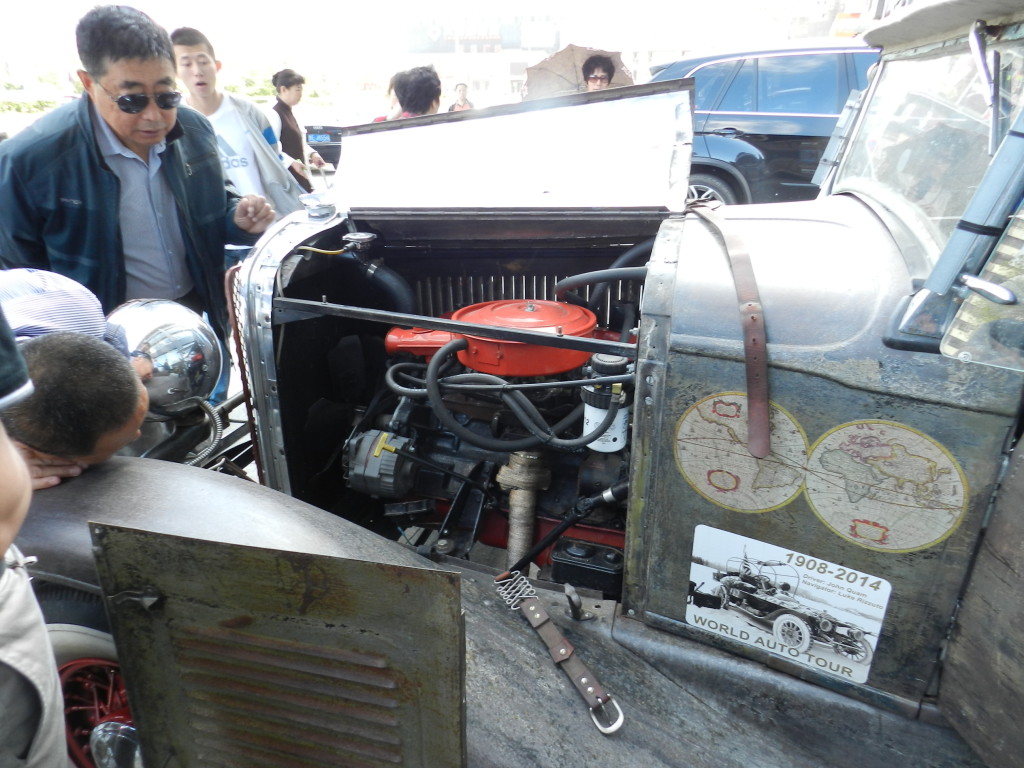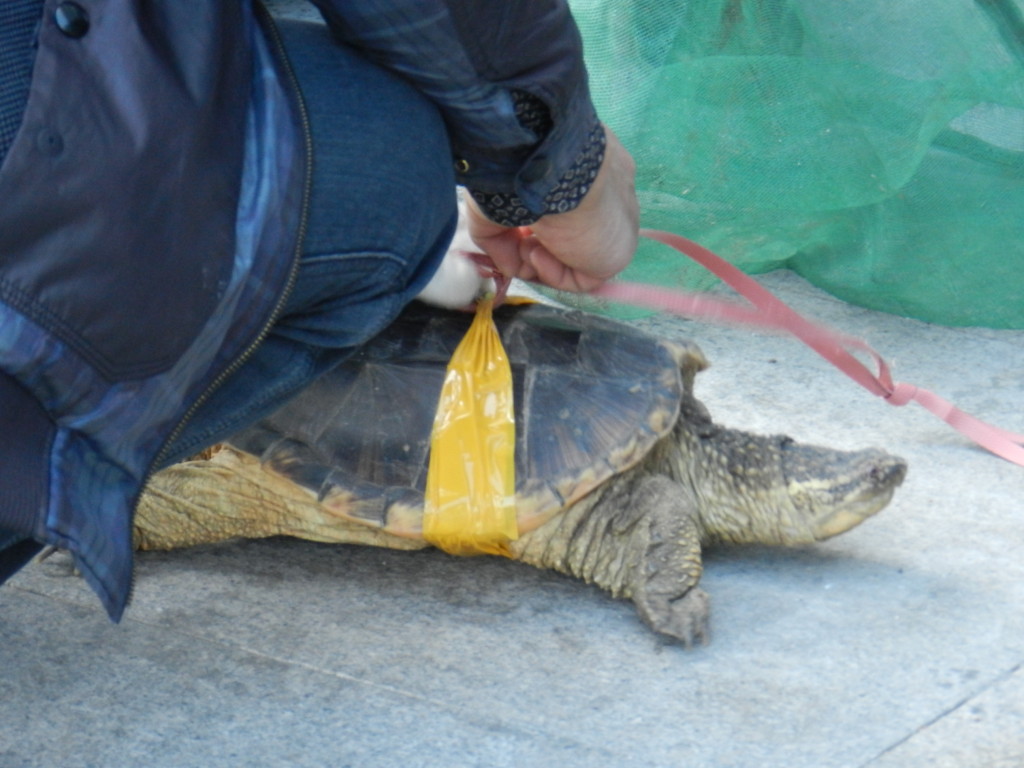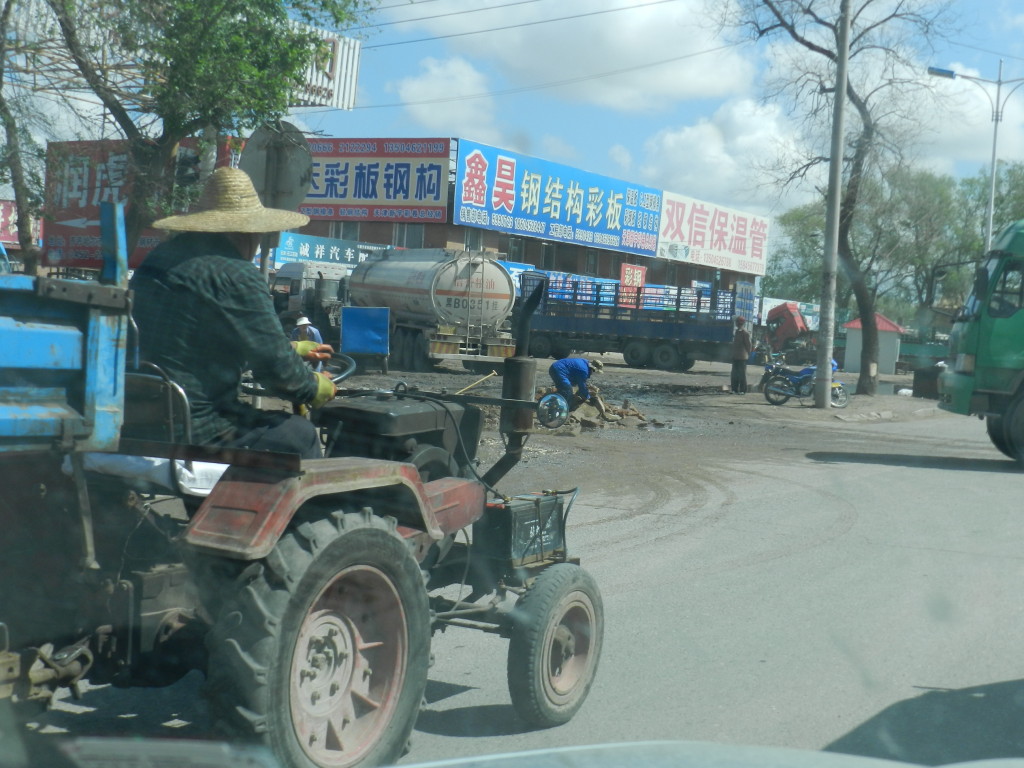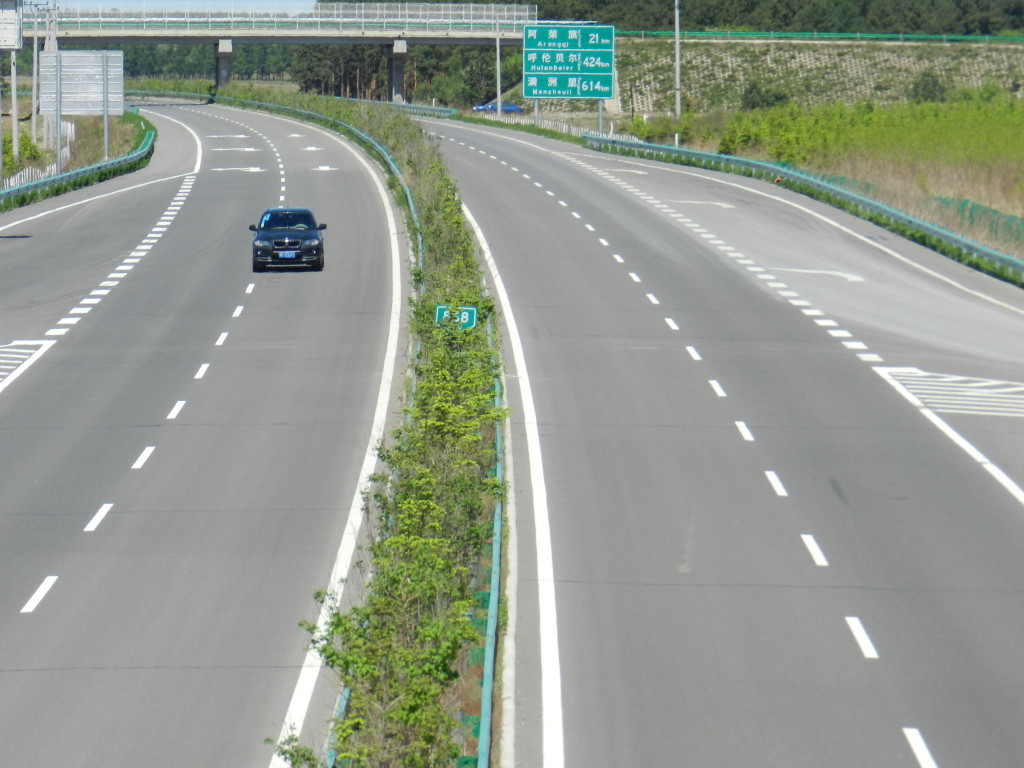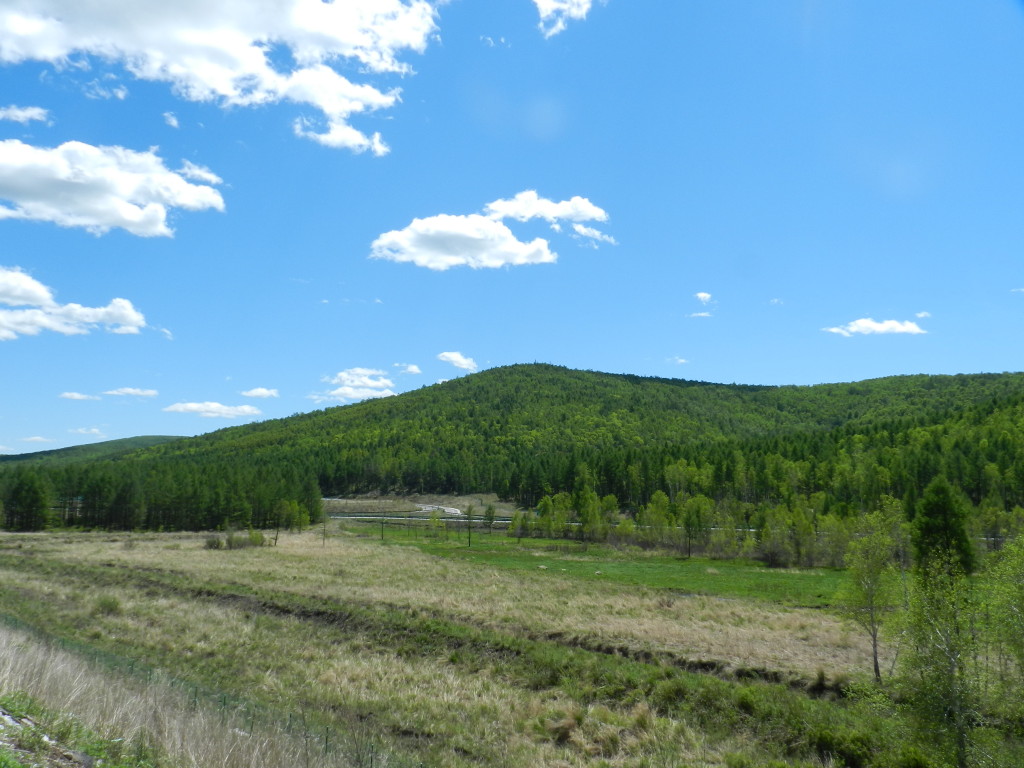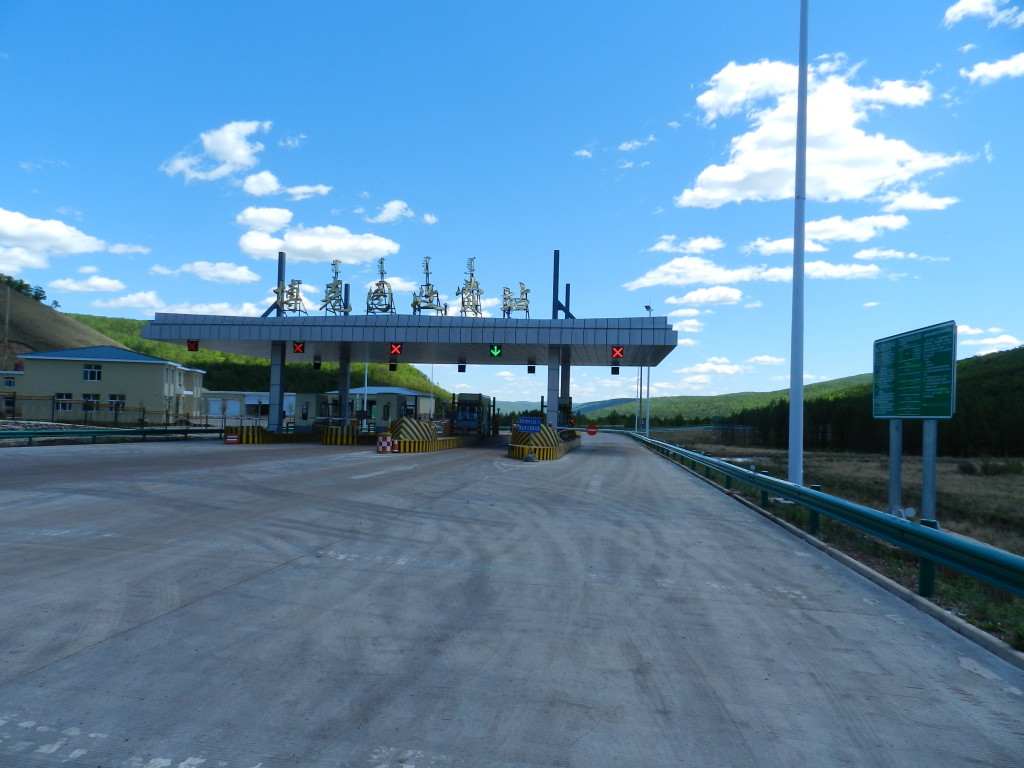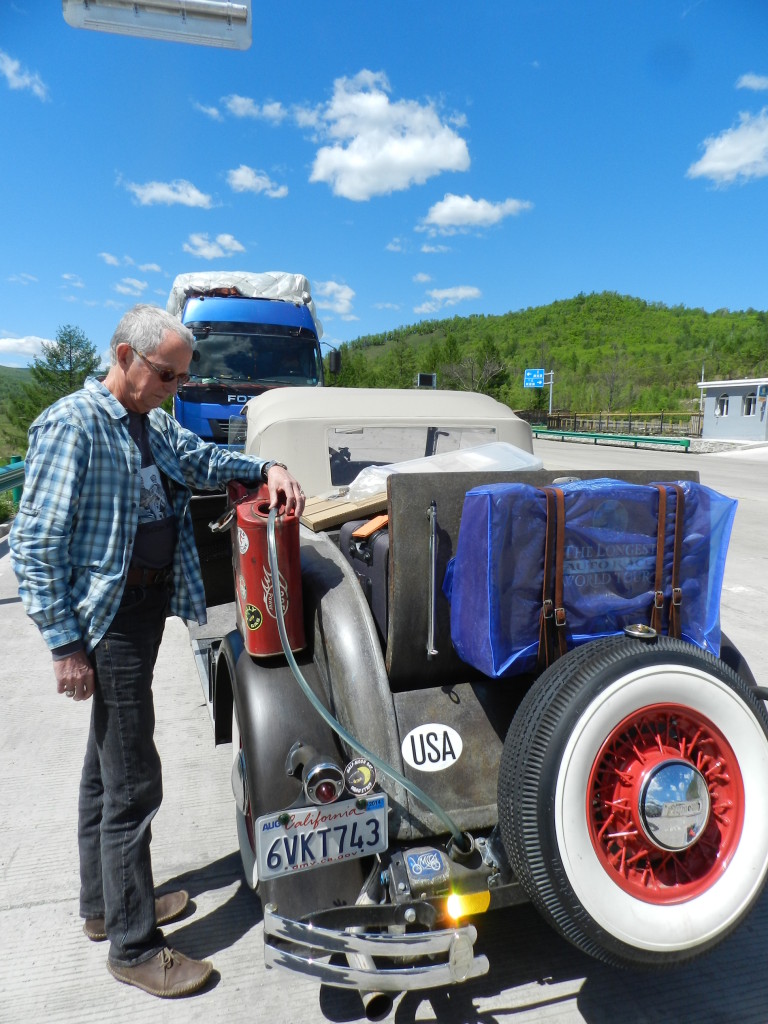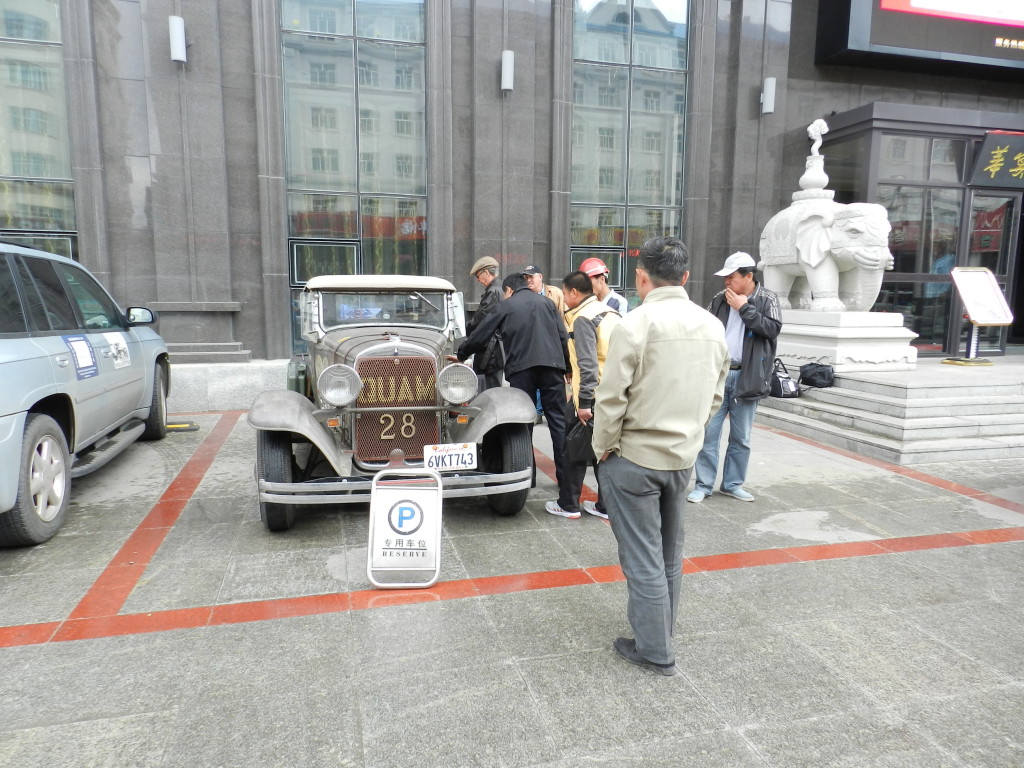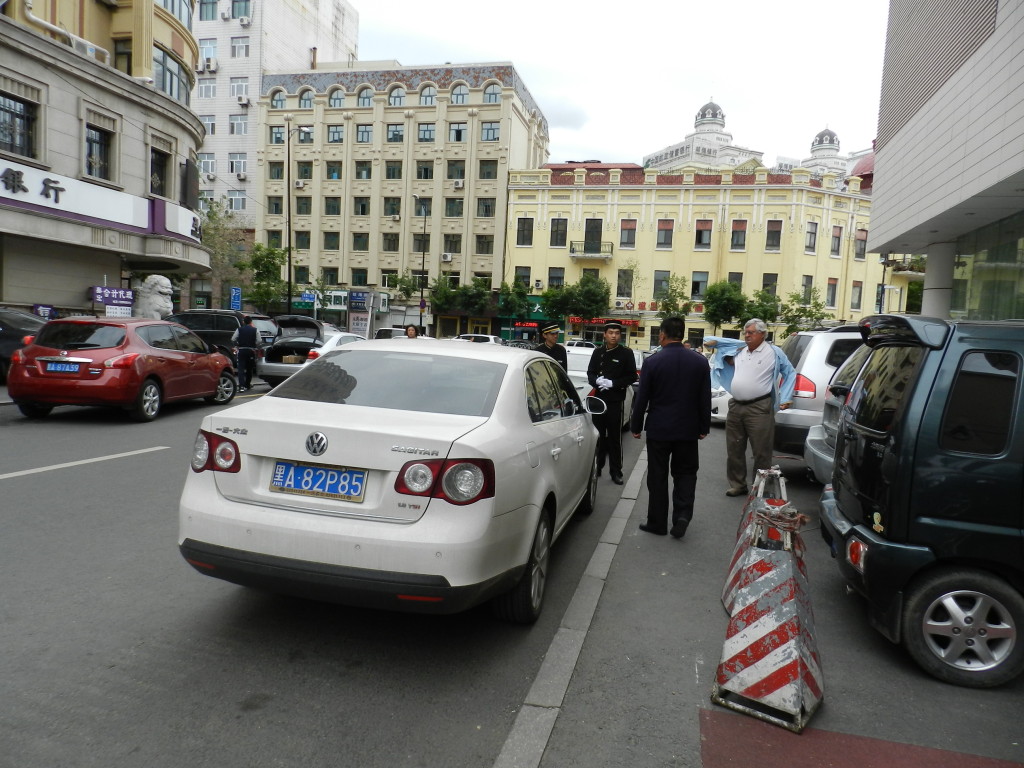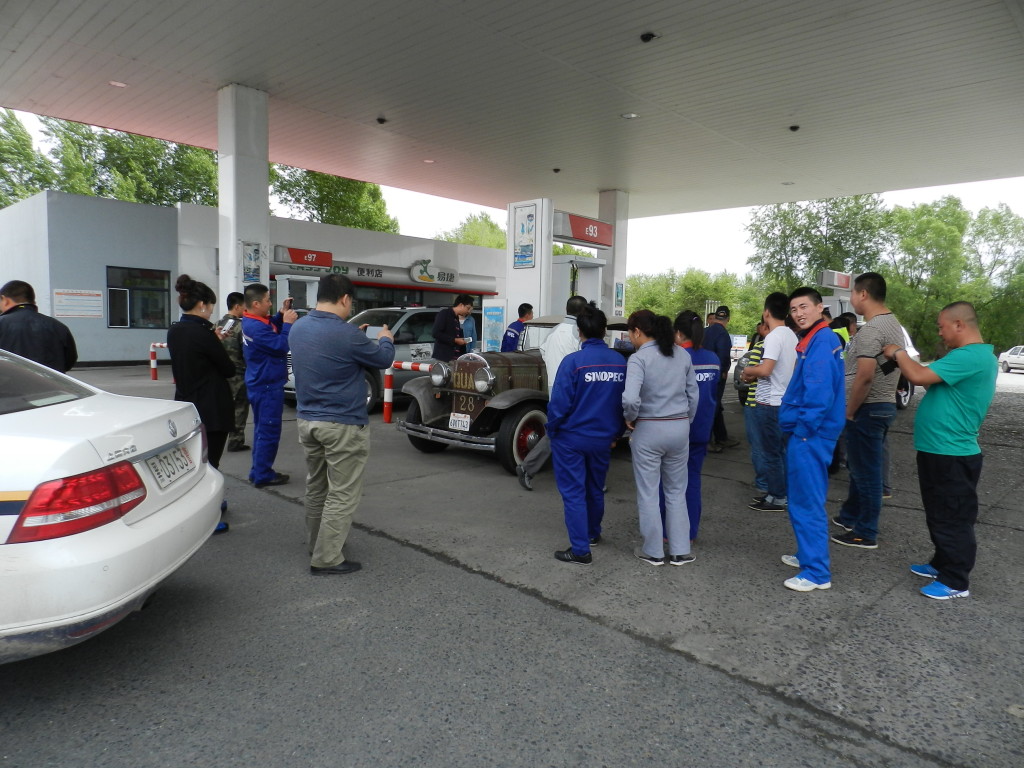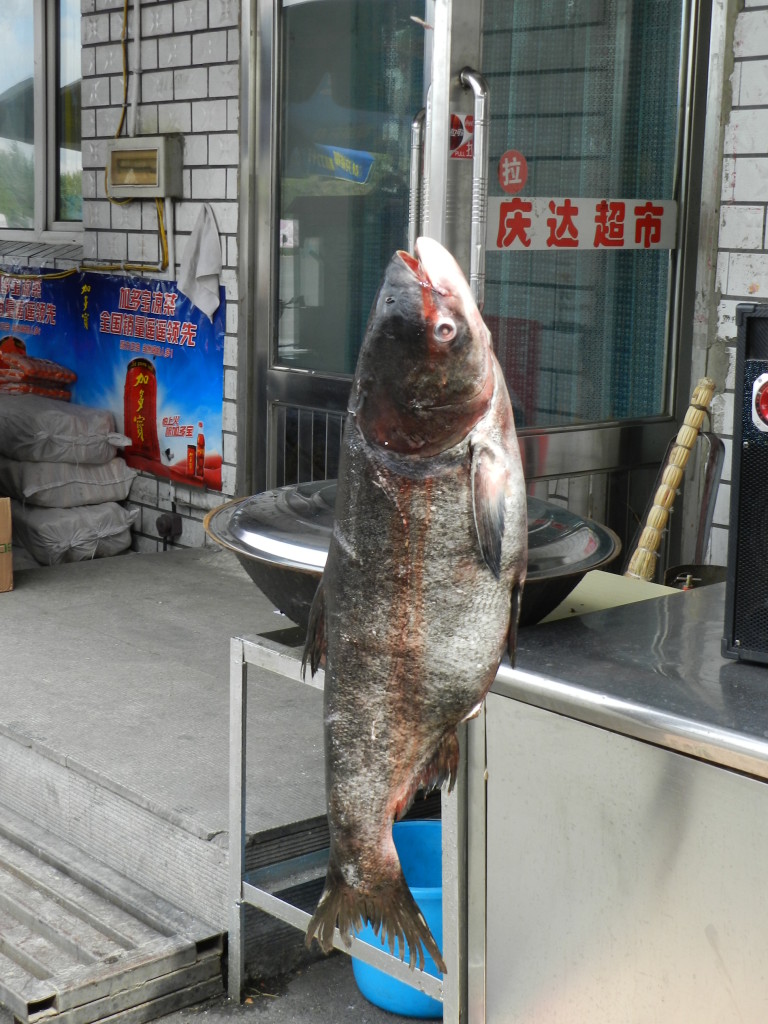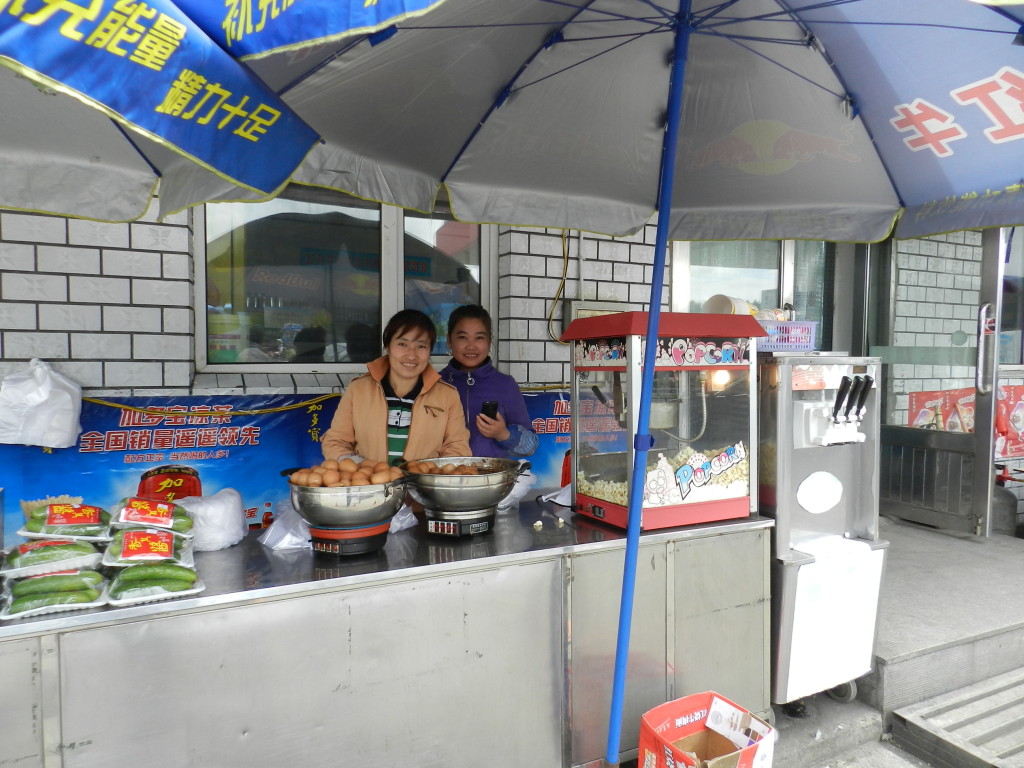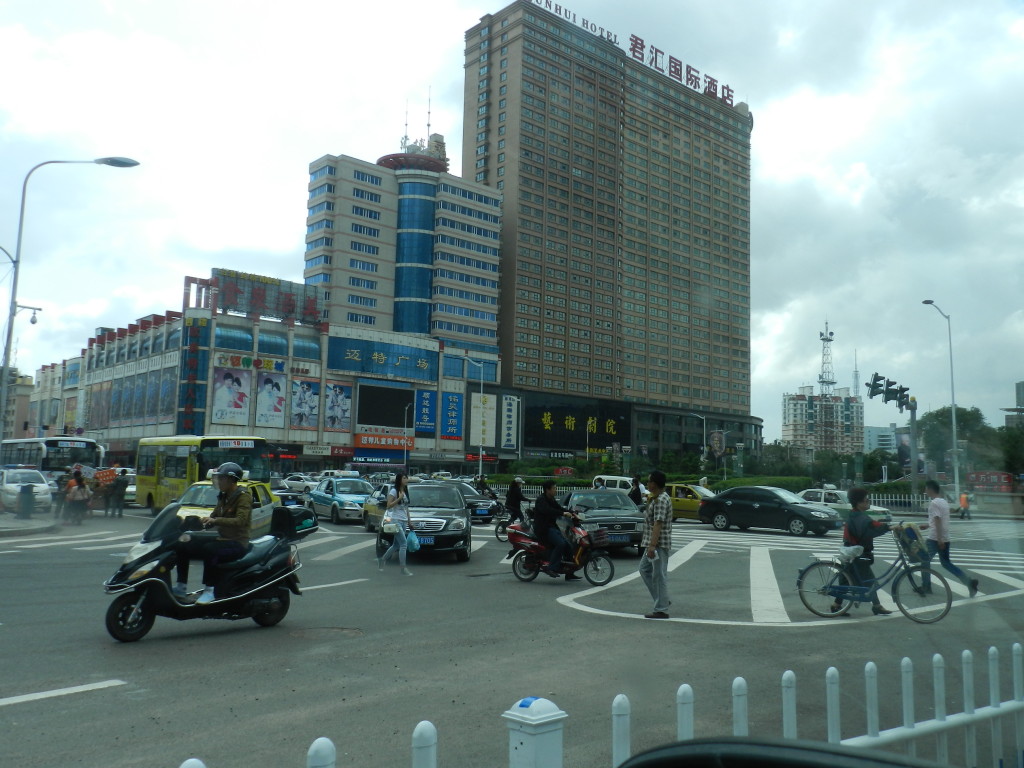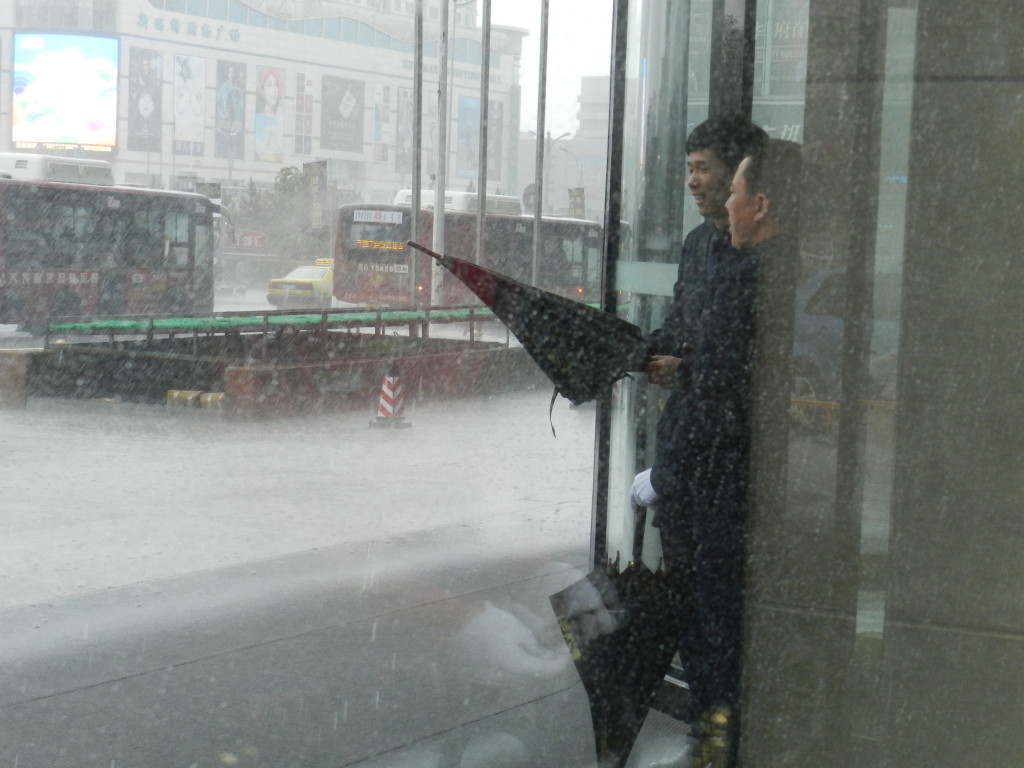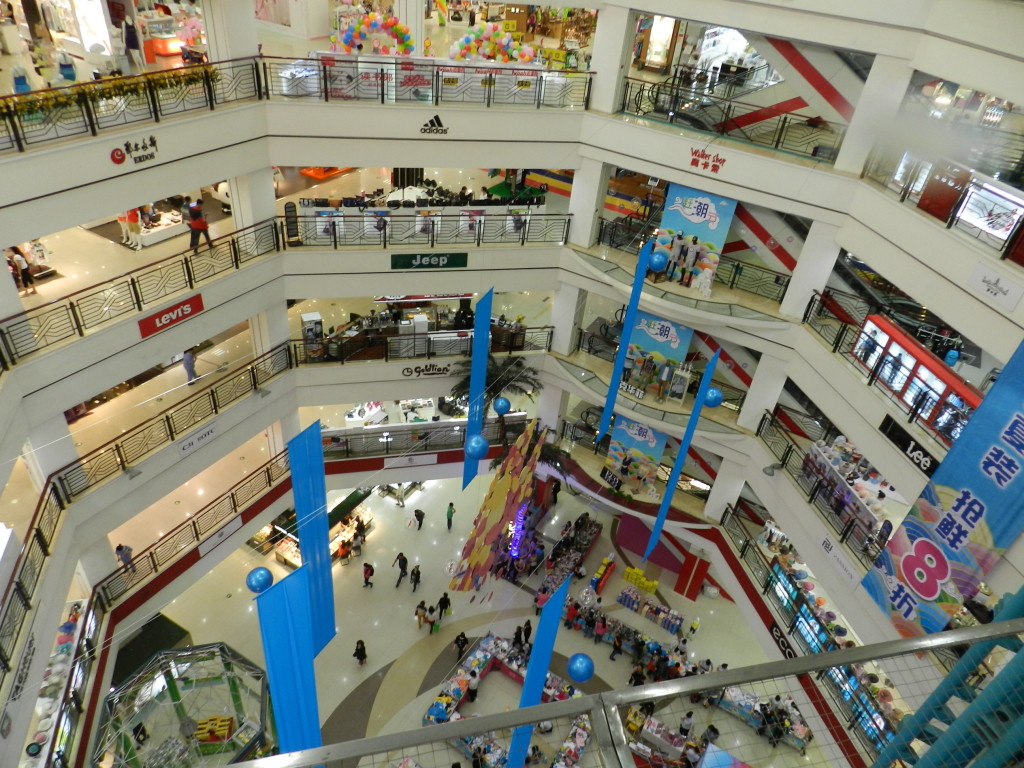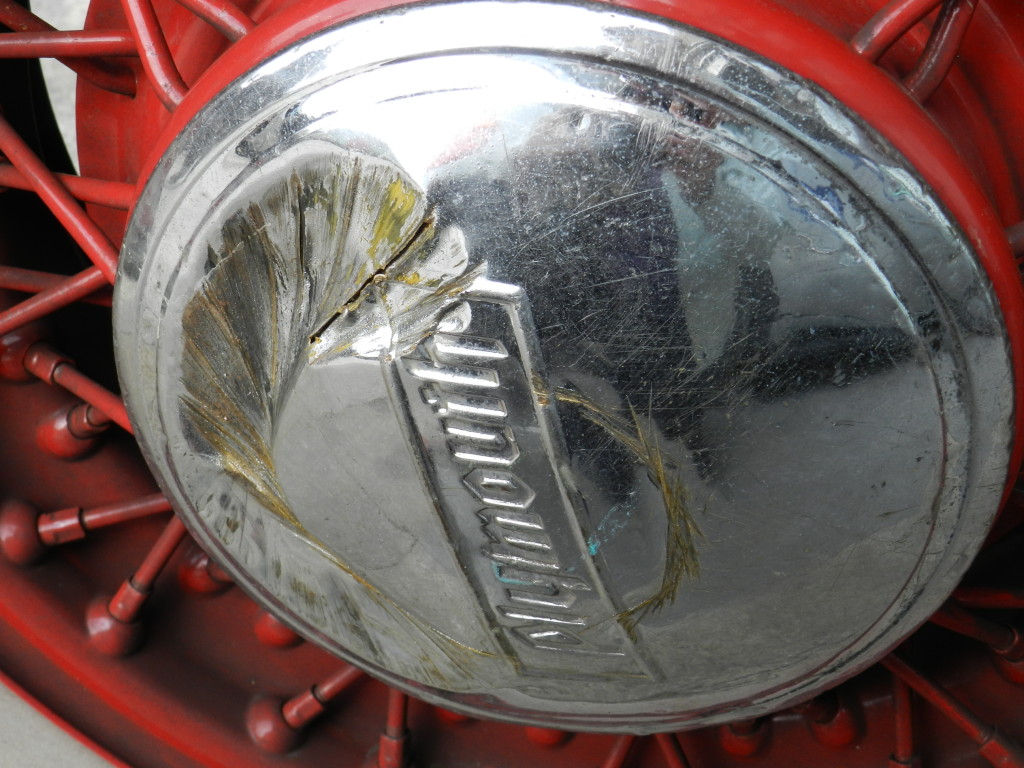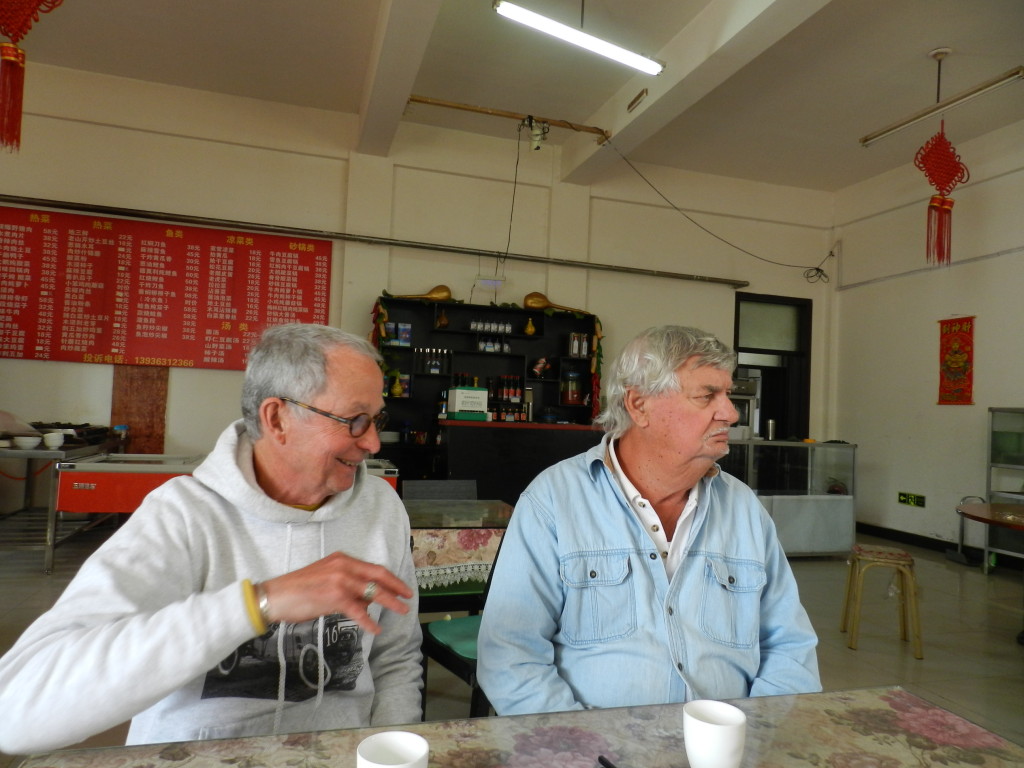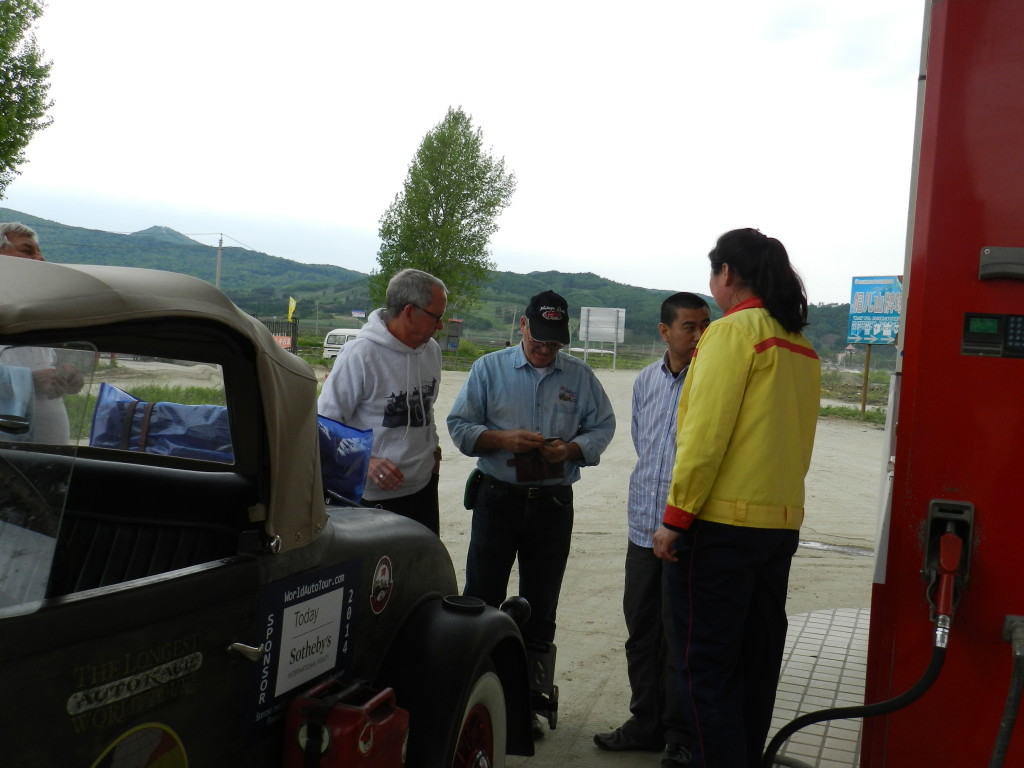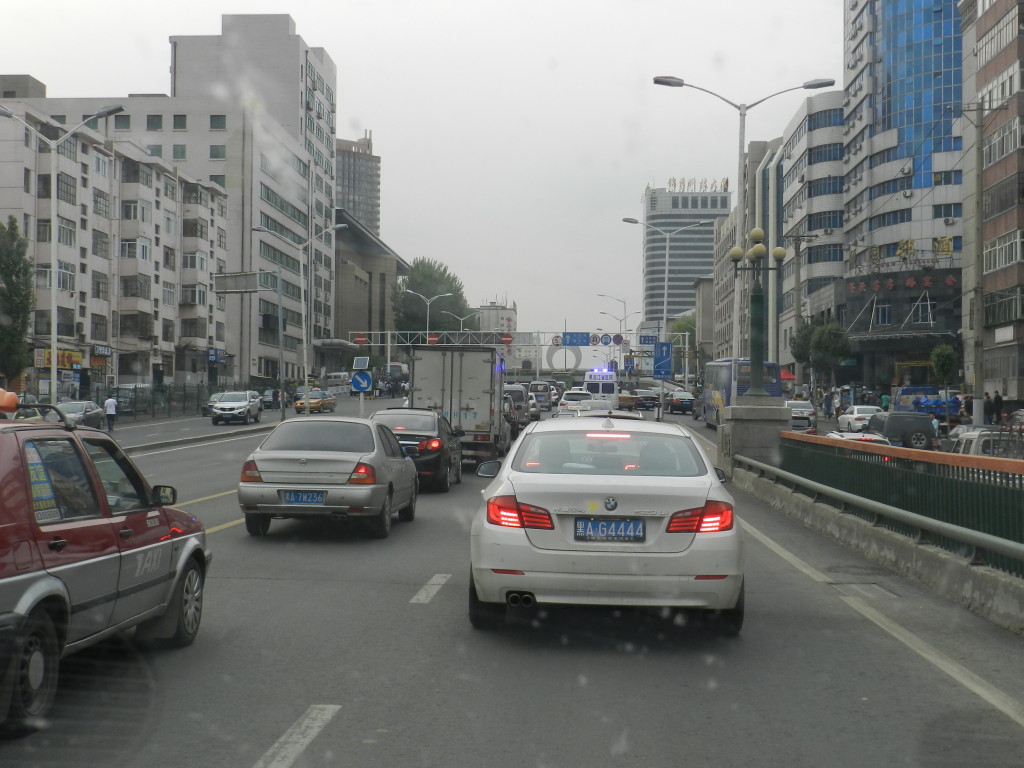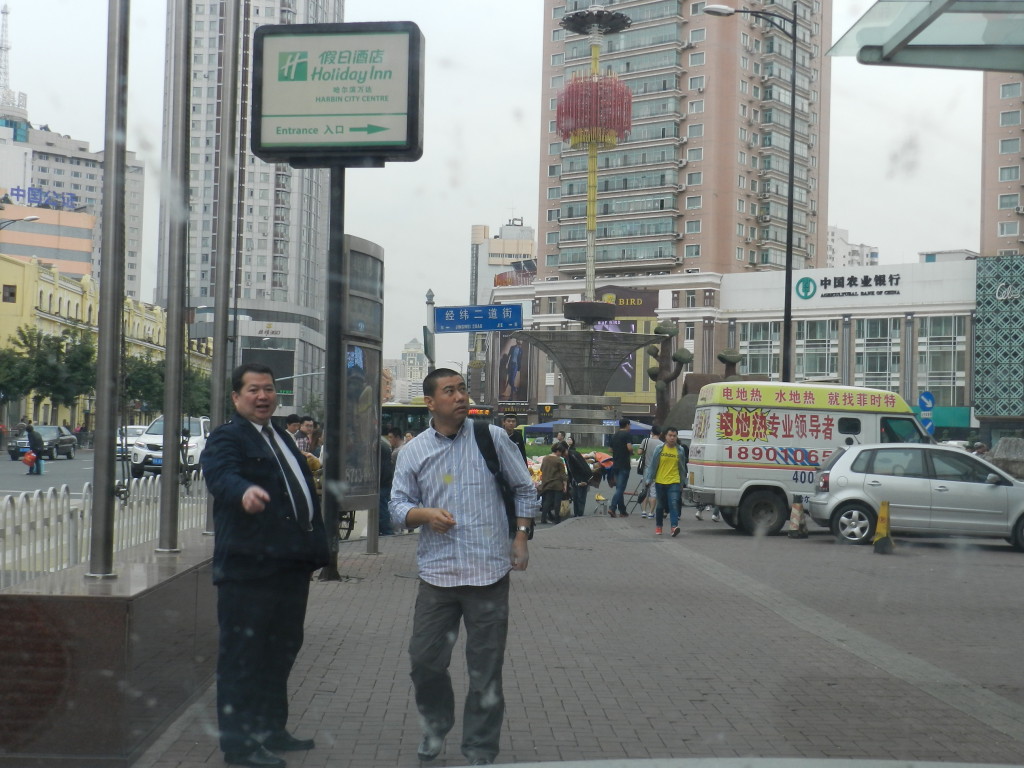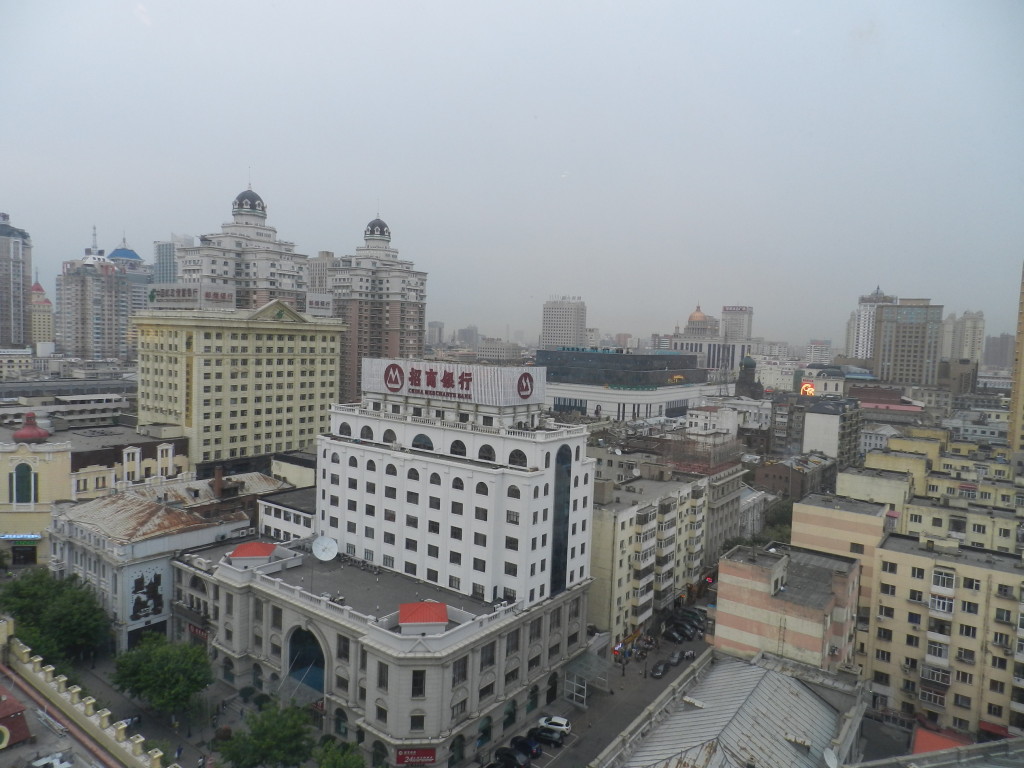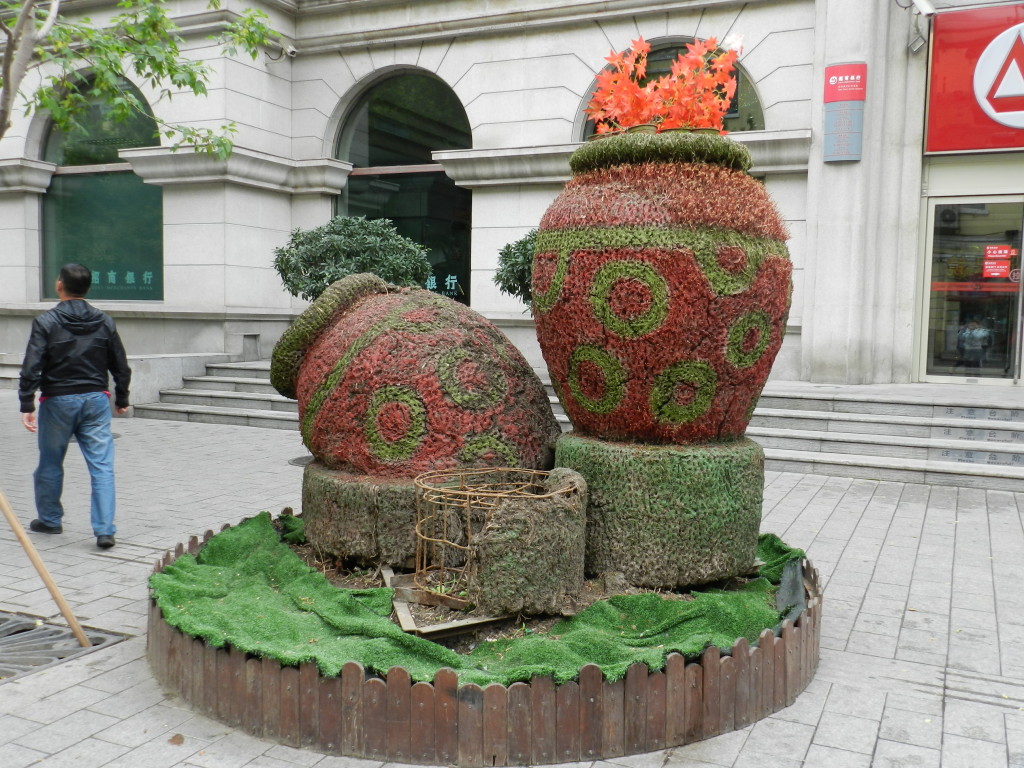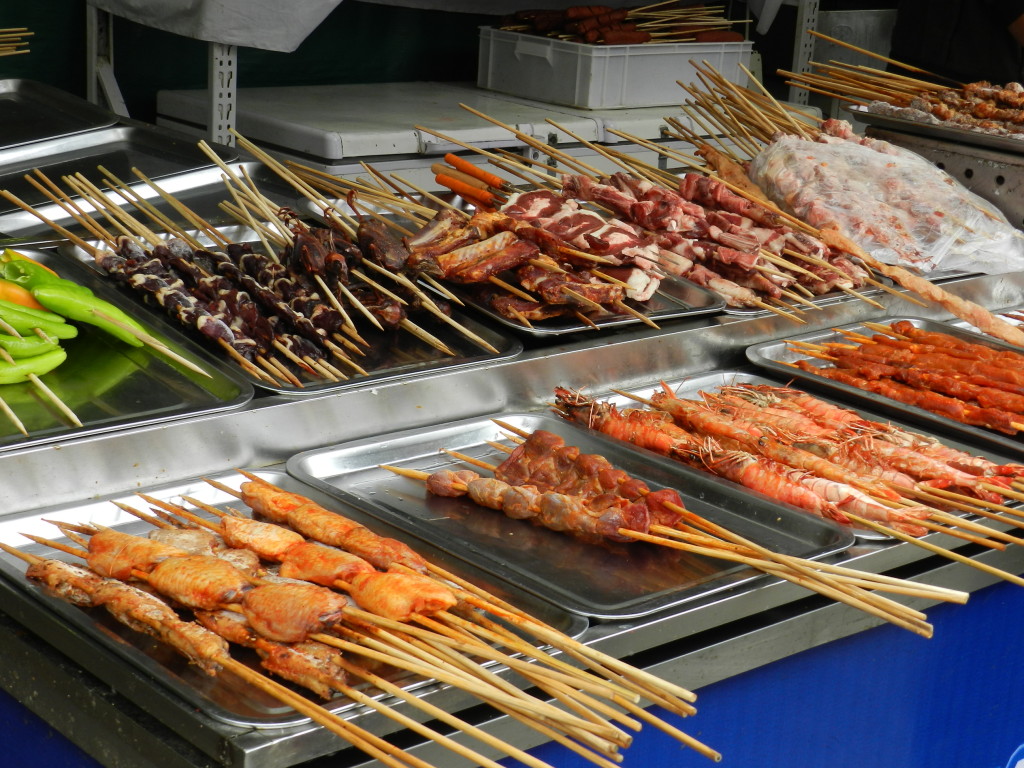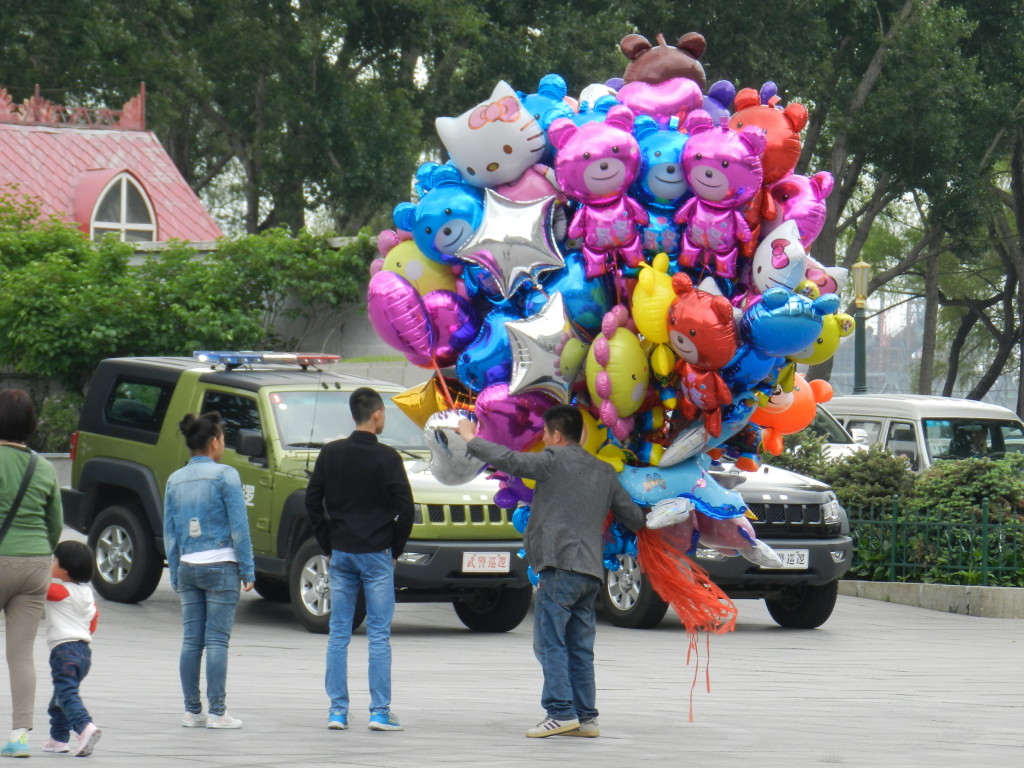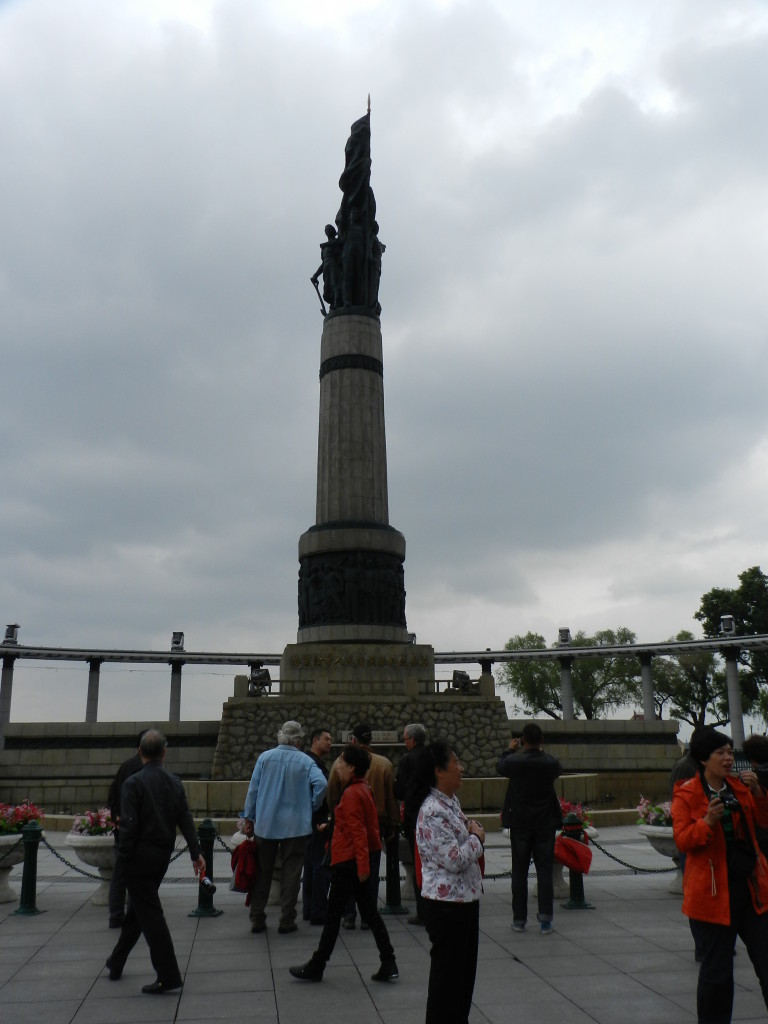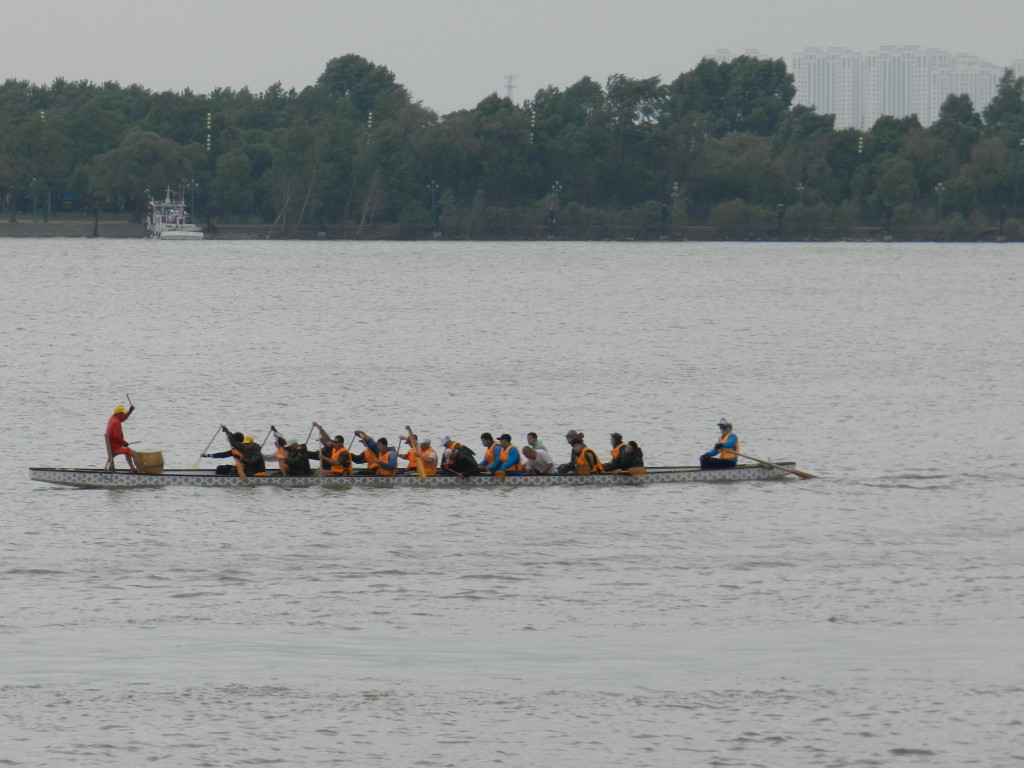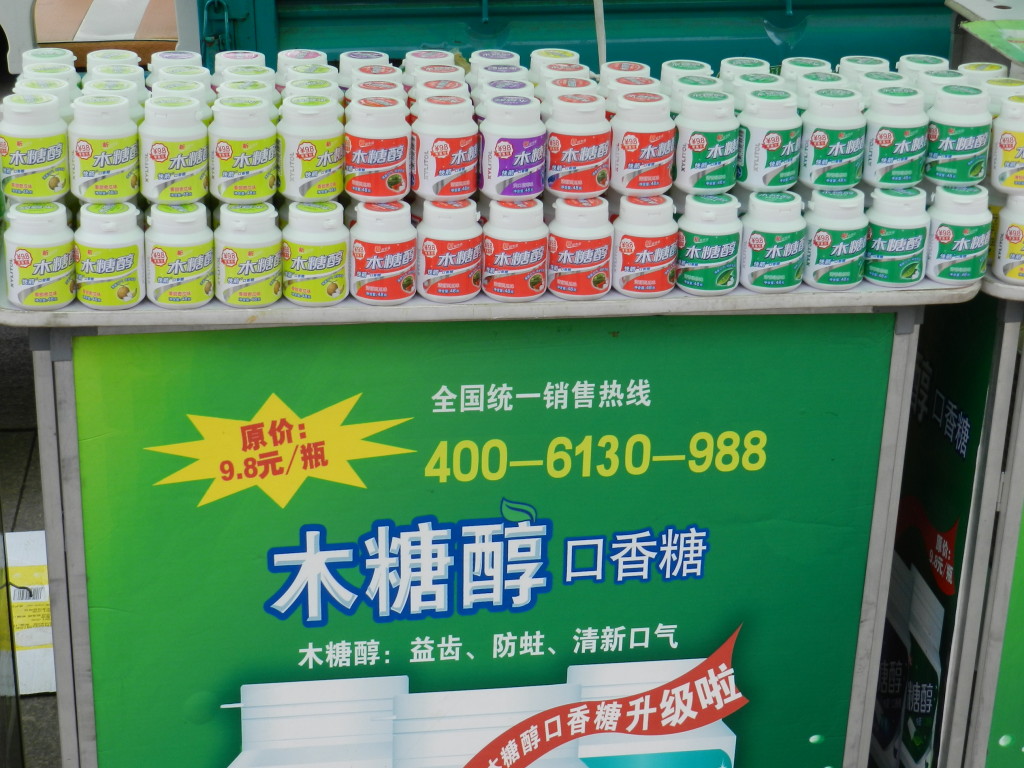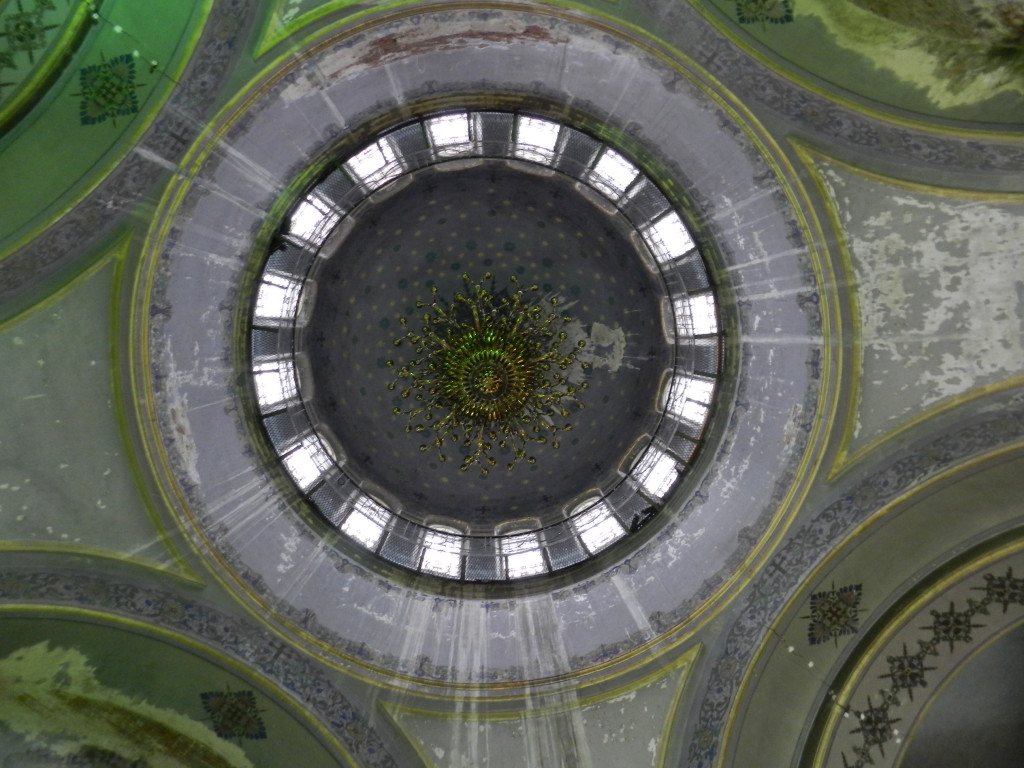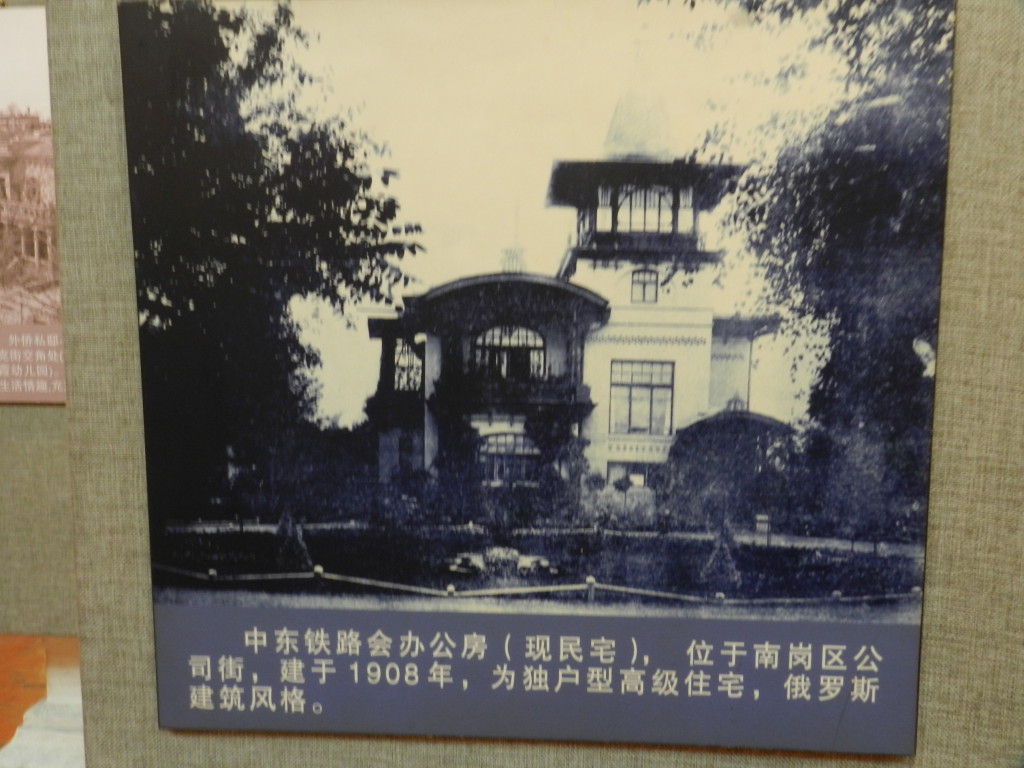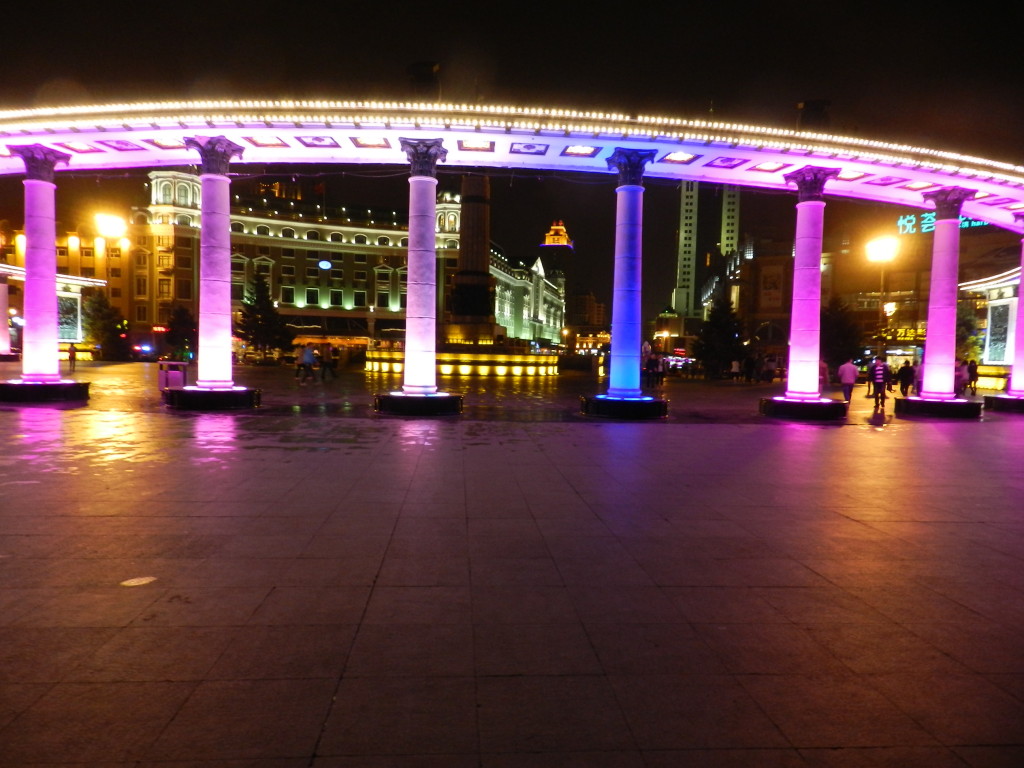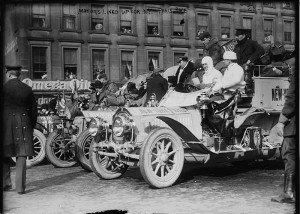We had a beautiful drive today on the brand new G10 expressway through scenic Inner Mongolia. My map (which I purchased in the U.S.) depicted secondary roads for the rest of the trip, but it turns out that the G10 was completed from Suifenhe to Manzhouli (Eastern Russian Border to Western Russian Border) in the past year. The new road took more than a decade to build due to the short summers here.
We departed our hotel in Qiqihar about 9 a.m., but not before doing some troubleshooting on the brake lights again.
I also spotted two turtles on leashes outside our hotel — I’m not sure if they’re pets or if ingredients for soup is in their future.
Leaving Qiqihar was easier than arriving, although we still had to go back through the mud bath from yesterday. Here’s picture of the road on the way out:
We stopped for gas about 10:30, and the station had an overhead walkway connecting the service areas on both sides of the road, so I climbed up and took the shot below. You can see Manzhouli, our destination for tomorrow, listed at the bottom of the road sign in the distance.
The scenery in Inner Mongolia is spectacular, as you can see from the picture below — rolling green hills with forests and lots of rivers and marshes. We also had blue skies for the first time in more than a week.
Unfortunately, we also learned that because the G10 in Inner Mongolia is so new, the service areas aren’t open yet. The Roadster was running low on fuel, so we got off at an exit, but the toll booth attendant said it was another 25 km into town, and we would have to drive another 25 km back to the expressway. The area around the toll gate was deserted, except for a truck apparently taking a break, so we pulled over and John added some fuel from the emergency cans that he carries. It was enough to get us to Yakeshi, about 150 km down the road.
About 30 minutes after we got back on the road from the emergency refueling, we crossed over the railroad line that used to be the Chinese portion of the Trans-Siberian Railway. We’ve been paralleling the track for some time now, but this was the first time we’ve seen it since we left Vladivostok. The original racers weren’t on the railway at this point in the race anymore, but they were following a nearby road, so we may have passed by some of the same scenery they saw more than a century ago.
Right after crossing the railroad, we ran into a downpour, and John had to stop to install the window panels in the Roadster. I appreciated the storm because it washed all the bugs off the windshield of the Envoy!
We arrived in Yakeshi about 3 p.m., taking only six hours instead of the nine hours we would have needed if we had taken the original route (the G301) the entire way. Part of us wishes we had been able to drive the old highway, but we really appreciated the smoothness of the new highway.
Yakeshi is much smaller than Harbin and Qiqihar, but Mir Corporation still managed to find us a very nice hotel!
Tomorrow: Manzhouli, on the Russian border, 265 km.
